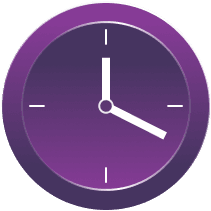Video conferencing is not just a temporary solution born out of necessity during the global pandemic; it has firmly established itself as a game-changer in the realm of HR. With this shift, the interview process has been completely transformed, offering numerous benefits for both employers and candidates. In this article, we will explore how video conferencing alters recruitment, providing a more efficient and effective way to conduct interviews and ultimately transforming the way we think about talent acquisition.
Video Conferencing for Interviews
Video conferencing for interviews is a powerful tool that allows companies to connect with candidates who are in different locations. It is an innovative solution driven by WebRTC development services that leverage technology to streamline the hiring process, enabling employers to interview candidates without physically being in the same room.
One of the most significant advantages of video conferencing for interviews is that it allows for a human-like interaction between the interviewer and the candidate. The platform allows for visual and audio communication, enabling the interviewer to gauge the candidate's non-verbal cues and expressions, which are just as important as verbal communication.
Video conferencing can be conducted via various devices such as a desktop at work, a home computer, a laptop, a smartphone, or a tablet. This versatility makes it easy for both the interviewer and the candidate to participate in the interview comfortably and conveniently from any location.
How Video Conferencing is Revolutionizing HR
Video conferencing has significantly altered the landscape of HR, particularly in recruitment and interviews. This technology allows HR professionals to connect with candidates from anywhere in the world, breaking geographical barriers and expanding the talent pool. TechTarget has created a visual that very well depicts the benefits of video interviews.

According to The Economic Times, pre-pandemic, face-to-face interviews dominated the first round of hiring processes, accounting for over 75% of interviews. However, the paradigm has shifted drastically post-pandemic, with 90% of organizations now conducting virtual interviews in the initial stages. This 93% increase in virtual interviews demonstrates the rapid adoption and acceptance of virtual hiring methods.
Enhancing Productivity through Virtual Meetings
Scheduling and conducting interviews can be time-consuming, often involving multiple rounds and numerous stakeholders. By leveraging video conferencing technology, HR professionals can streamline these processes, reducing the time spent on logistical arrangements.
Virtual meetings also allow for quicker decision-making. Gathering insights and making informed decisions promptly becomes easier when stakeholders can join a meeting from any location.
Improving Communication within HR Teams
An effective work communication app is the backbone of any successful HR team. Video conferencing tools facilitate better communication by providing a platform for real-time discussions and collaborative decision-making. Video conferencing ensures everyone is on the same page, whether it's a team meeting to discuss recruitment strategies or a brainstorming session for employee engagement initiatives.
In addition to real-time conversations, many video conferencing platforms offer screen-sharing and collaborative document editing features. These tools make it easier for HR teams to share information, review candidate profiles, and finalize interview questions, enhancing overall team efficiency.
Increasing Engagement with Remote Employees
Remote work presents unique challenges, particularly when it comes to employee engagement. Video conferencing can bridge the gap, ensuring remote employees feel connected and engaged with the organization. Regular video check-ins, virtual team-building activities, and online training sessions are ways HR teams can leverage video conferencing to maintain a strong connection with remote employees.
By fostering a sense of community and belonging, video conferencing helps improve employee satisfaction and retention. Engaged employees are more likely to be productive and committed, contributing positively to the organization's success.
Choosing the Right Video Conferencing Software for HR
Selecting the right video conferencing software is crucial for maximizing the benefits of virtual meetings. There are various factors to consider, including ease of use, integrations with other HR tools, security features, and cost. HR professionals need a solution that meets their needs while providing a seamless user experience for interviewers and candidates.
Key Features to Look for in Video Conferencing Software
Not all video conferencing software is created equal. Here are some key features to look for when choosing a solution for HR:
- Ease of Use: The platform should be intuitive and user-friendly, with minimal setup required.
- Integration Capabilities: Look for software that integrates seamlessly with your existing HR tools, such as applicant tracking systems and calendar applications.
- Security: Ensure the platform offers robust security features, including end-to-end encryption and secure data storage.
- Scalability: Choose a solution that can grow with your organization, accommodating increasing numbers of users and more complex workflows.
- Recording and Transcription: These features can be invaluable for reviewing interviews and sharing insights with other stakeholders.
- Analytics: Detailed analytics can provide insights into meeting performance, helping you identify areas for improvement.
Comparing Zoom, Microsoft Teams, and Other Platforms
Let's take a closer look at some of the leading video conferencing platforms and how they stack up for HR purposes:
Zoom
Zoom is widely recognized for its ease of use and reliability. It offers a range of features, including breakout rooms, meeting recordings, and virtual backgrounds. Zoom integrates with various HR tools and provides robust security features. Its scalability makes it suitable for organizations of all sizes.
Microsoft Teams
Microsoft Teams is part of the Microsoft 365 suite, making it an attractive option for organizations already using Microsoft products. Teams offers seamless integration with other Microsoft applications like Outlook and SharePoint. It also provides real-time collaboration, meeting recording, and extensive security measures. However, some users may find its interface less intuitive than Zoom.
Other Platforms
Other notable video conferencing platforms include Google Meet, Cisco Webex, and GoToMeeting. Each of these solutions offers unique features and benefits. Google Meet integrates seamlessly with Google Workspace, making it a convenient choice for organizations using Google's suite of tools. Cisco Webex is known for its robust security features and scalability, making it suitable for large enterprises. GoToMeeting offers ease of use and reliability, with features like meeting transcription and analytics.
I want to develop a custom Video Conferencing Software. Book a 30-min. consultation
Request a free callVideo Conference Benefits for HR Professionals
There are numerous benefits to video conferencing for HR professionals. Here are some of the key advantages:
- Time Savings: Virtual interviews eliminate the need for travel, reducing the time spent on logistical arrangements and enabling quicker decision-making.
- Cost Savings: By conducting interviews remotely, organizations can save on travel expenses and other associated costs.
- Expanded Talent Pool: Video conferencing allows HR professionals to connect with candidates from anywhere in the world, increasing the chances of finding the best fit for the organization.
- Flexibility: Virtual meetings can be scheduled at convenient times for all parties involved, accommodating different time zones and work schedules.
- Enhanced Collaboration: Video conferencing tools facilitate better communication and collaboration within HR teams, improving overall efficiency.
Improve HR Efficiency with Video Conference Software by Clover Dynamics
Clover Dynamics offers state-of-the-art video conferencing solution development services specifically designed for HR professionals. Our software combines ease of use, robust security features, and seamless integration with your existing HR tools. With Clover Dynamics, you can streamline your recruitment process, improve team collaboration, and enhance employee engagement.
We incorporate features like meeting recording, transcription, detailed analytics, and others according to your vision. Clover Dynamics has you covered whether you're conducting one-on-one interviews or team meetings.
FAQs
What is the difference between a video call and a video conference?
A video call is a one-to-one call between two people, while a video conference is a meeting between three or more people in different locations connected via video conferencing software.
How does Video Conferencing improve the hiring process?
It enables recruiters to conduct remote interviews and evaluate candidates from different locations. This saves time and money for both the company and the candidate and widens the pool of potential candidates.
What is Video Interviewing Software?
Video conferencing interviewing software takes this one step further by providing advanced features such as recording, screen sharing, and virtual whiteboards, which facilitate better communication and collaboration between the interviewer and the candidate.
Why Use Video Conferencing Interview?
Firstly, it saves time and money on travel, which is especially important for companies that are hiring candidates from different cities or countries.
Secondly, it enables recruiters to evaluate candidates more effectively, as they can see their body language and facial expressions during the interview. Thirdly, it provides a better candidate experience, allowing candidates to interview from the comfort of their homes, and reducing stress and anxiety.







